The Mororó House was completed in 2015 by Studio MK27, and it is located in Campos do Jordão, Brazil, 111 miles away from São Paulo. The site is known for its chilly weather conditions, which is why the architects had to create spacious yet cozy and inviting living spaces that would also benefit from amazing views of the outdoors.
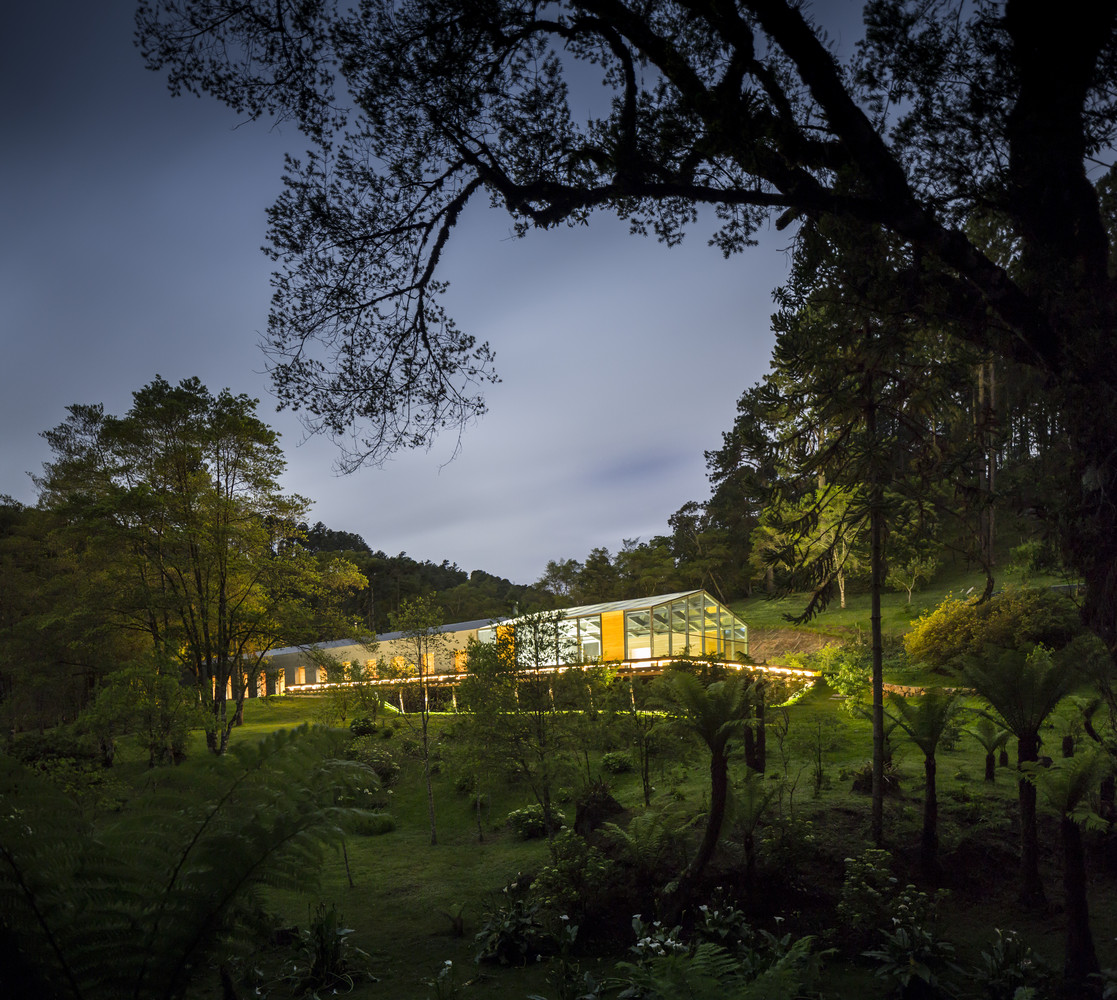
The bedrooms, service areas and the living room are located within an opaque block, while the sauna and the heated swimming pool are placed within a transparent volume. The opaque volume measures 154 feet in length and boasts sliding doors that fade the boundaries between the indoors and outdoors. Even though the owners wanted to build the house at the highest point on the lot, they eventually agreed with the exact opposite. Now, the abode is surrounded by beautiful pine trees and is integrated nicely in its natural environment. Similar to traditional homes in the mountains, the Mororó House includes plenty of wooden elements in its construction. For example, the wooden sliding doors in the kitchen allow it to open up completely to other living areas.
The residence flaunts 7,857 square feet of living space, and it is absolutely delightful.
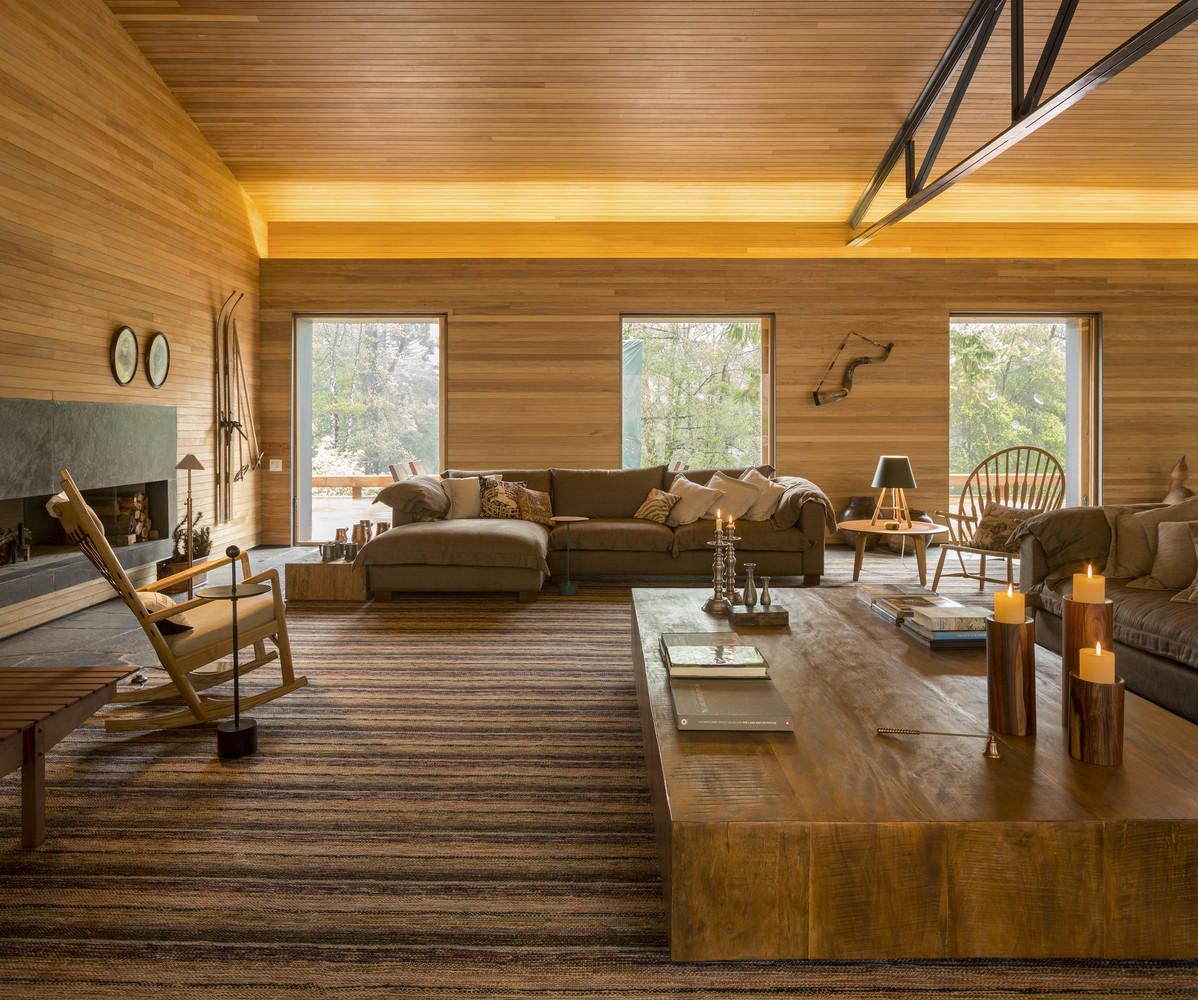
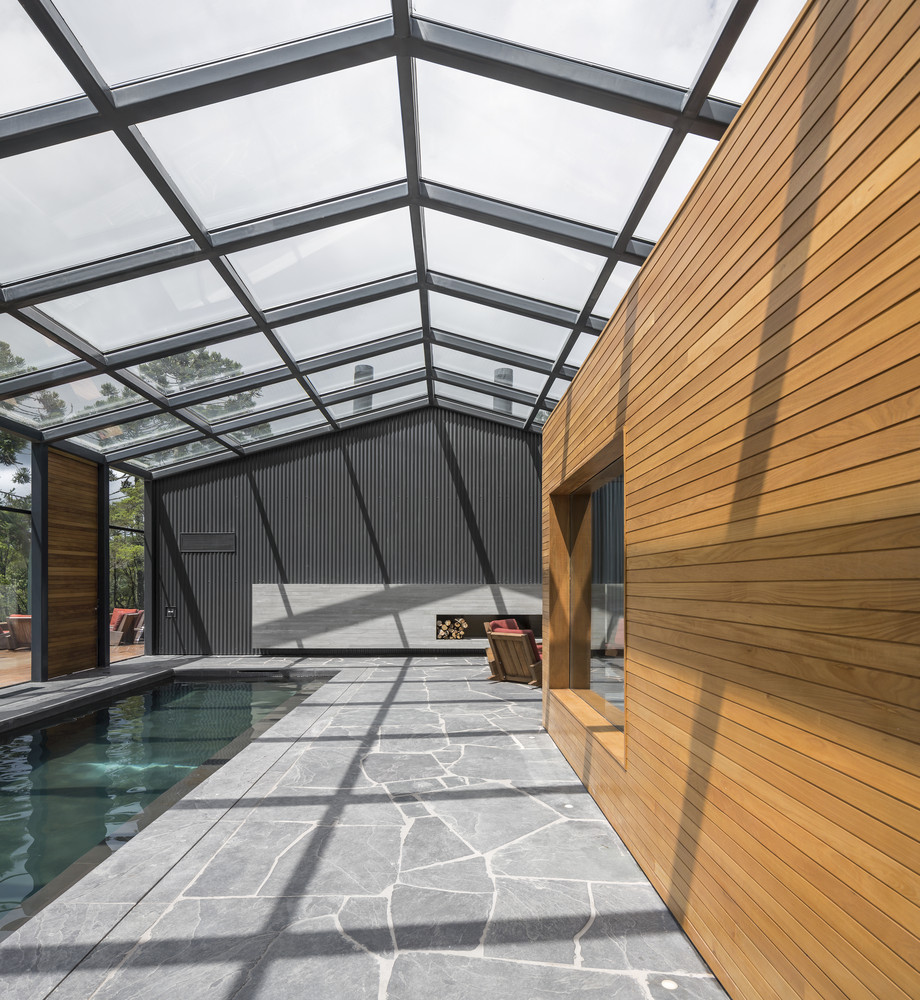
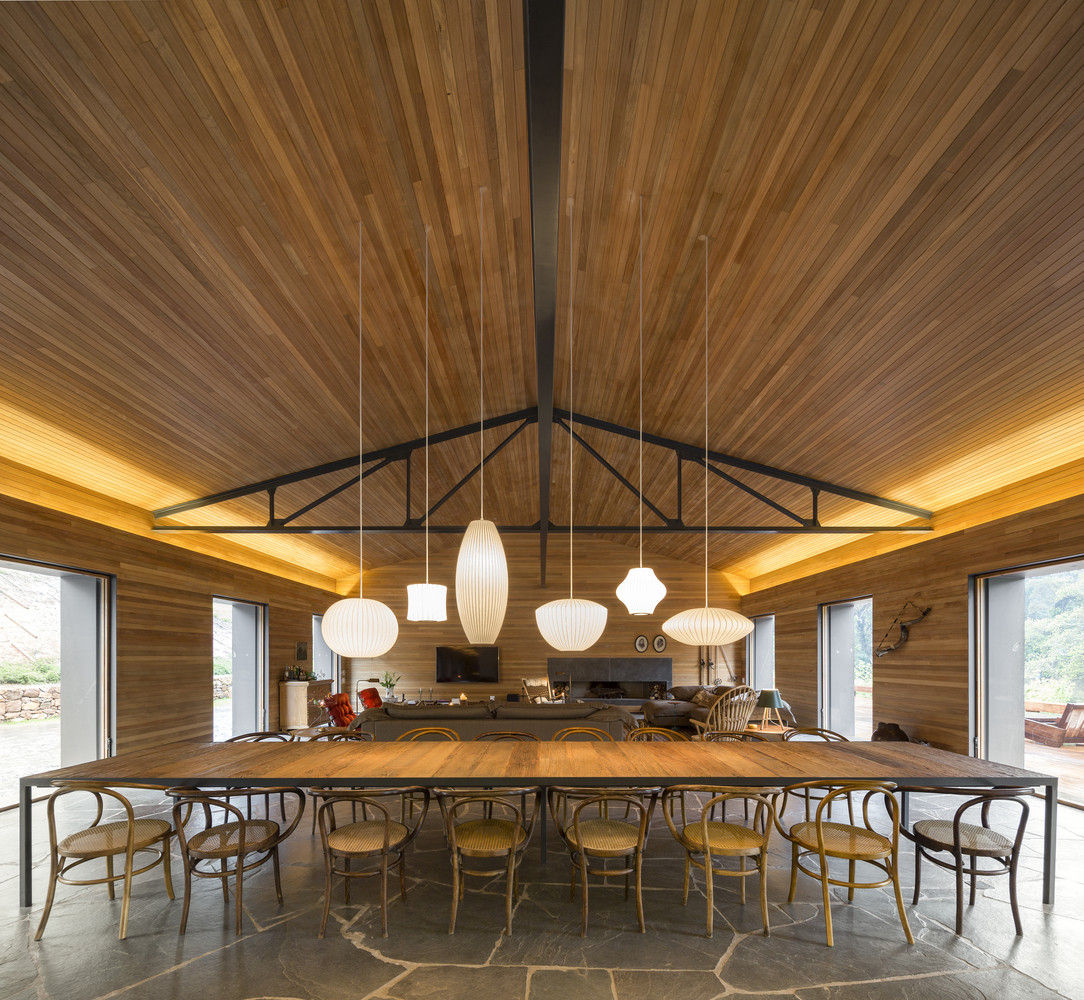
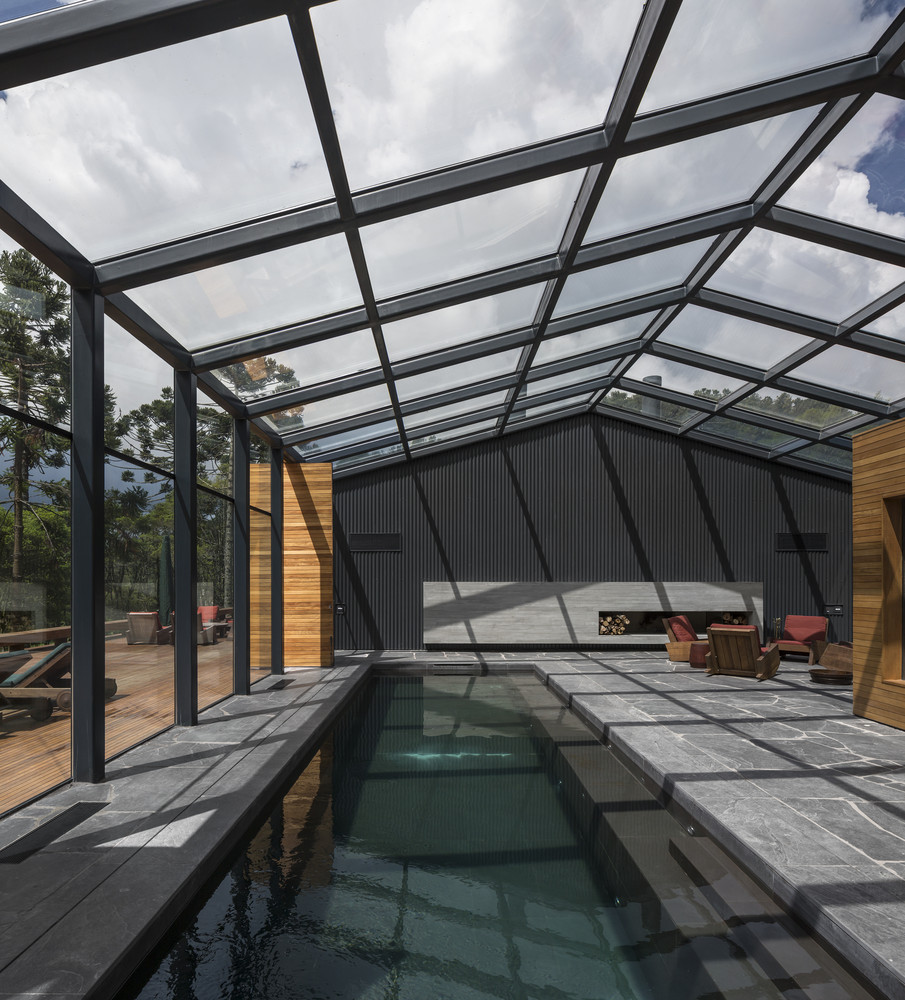
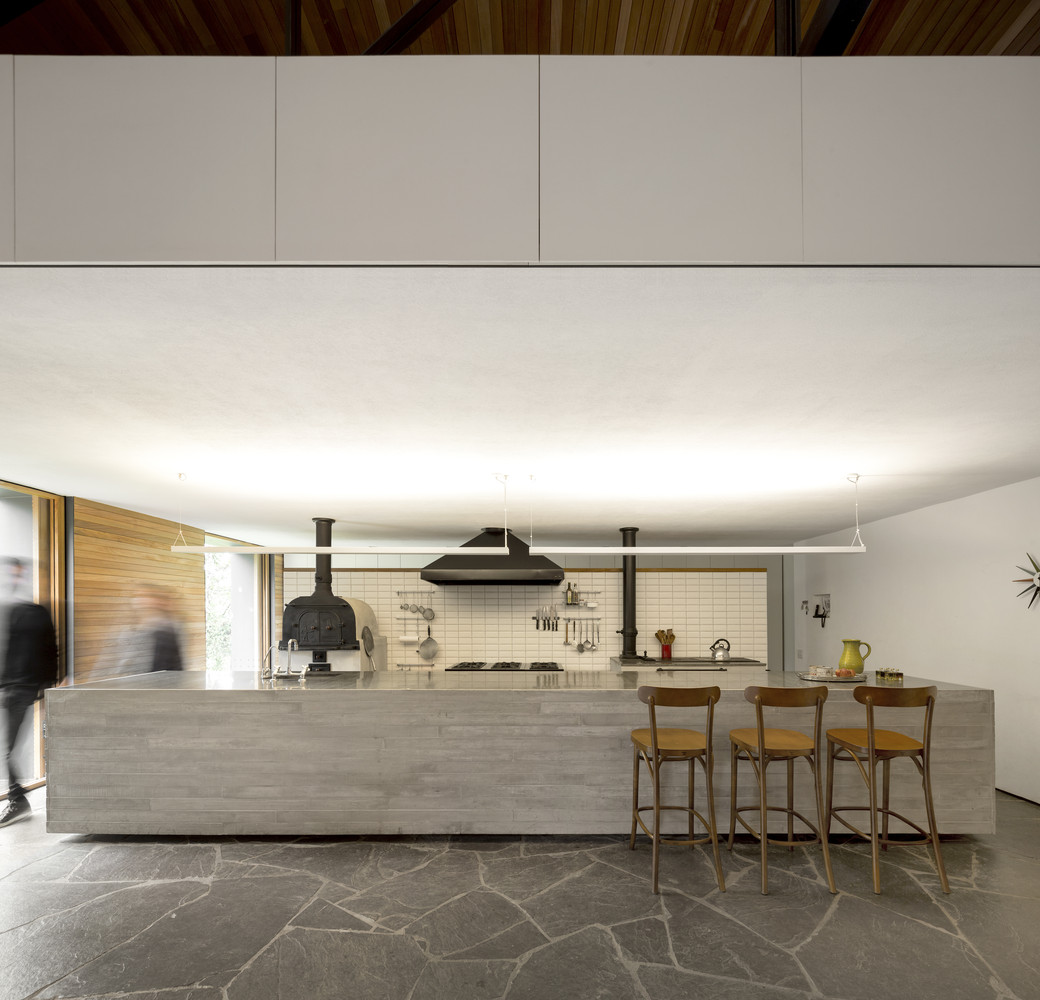
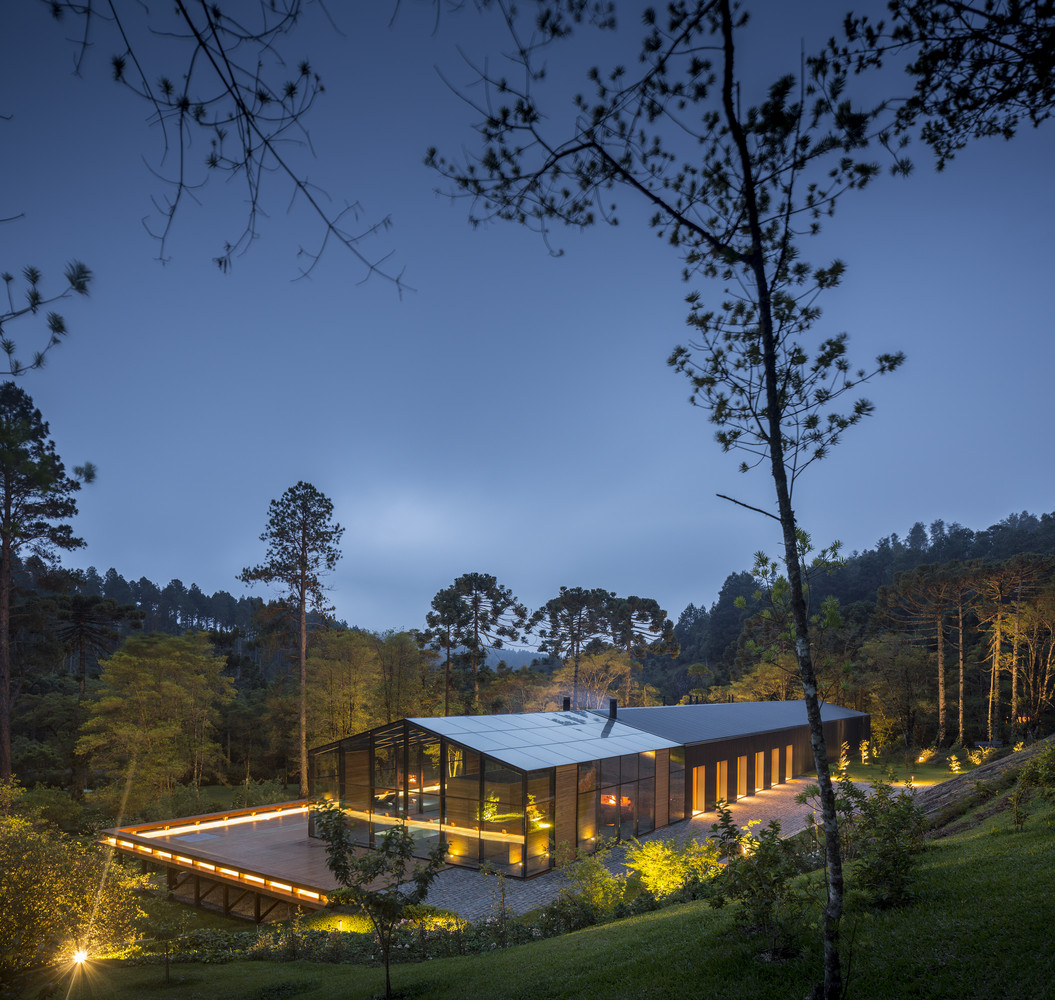
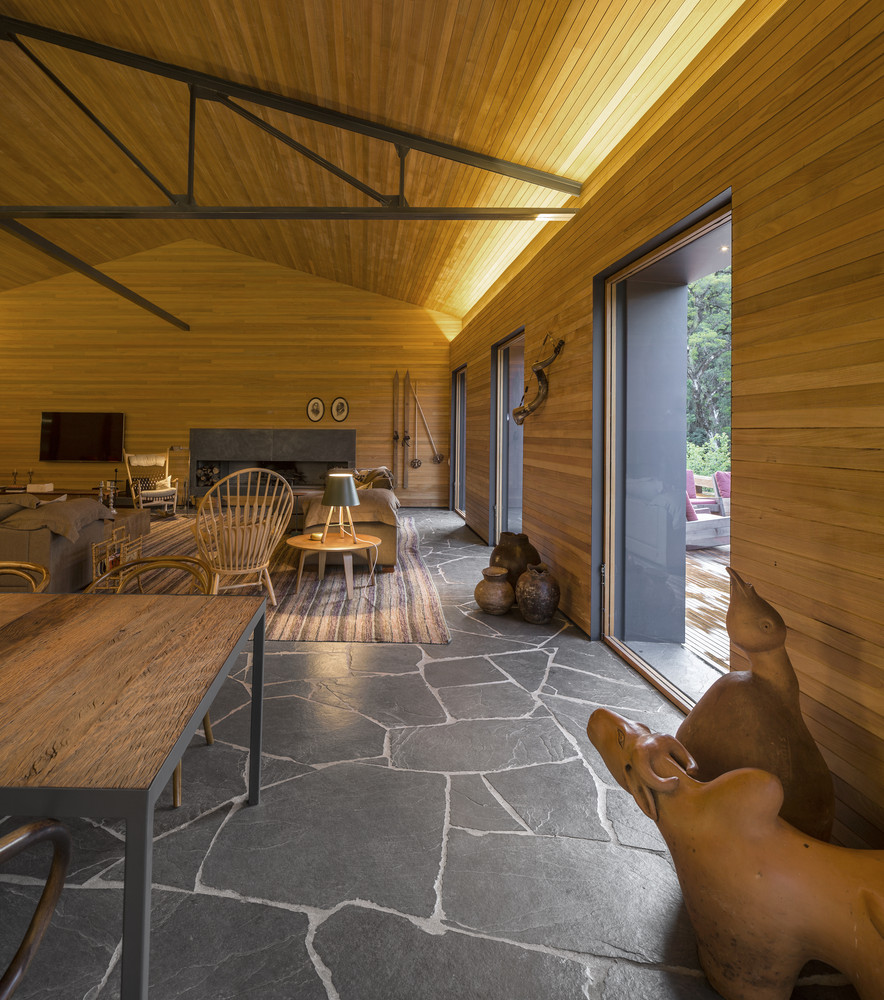
From the architect:
The Mororó House is in a mountainous region, 180 km from the city of São Paulo, known for its low temperatures. The architecture sought to create generous internal spaces for the cold days, such as, for example, a cozy living room and an enclosed bathhouse with a pool, where the views can be appreciated while being protected by a skin of glass.
Externally, the same continuous volume creates a duality between an opaque block – where the living room, bedrooms and service areas are – and the transparent stretch of the heated pool and sauna. The volumetry of the house was given by a sixty-five meters extrusion of an icon-house, with pitched roof. Furthermore, an external wooden deck connects the spaces and creates a solarium to be used during the summer months.
In the opaque part of the volume, which is 50m long, the openings were minimized and used as sliding doors to intensify the integration between inside and out. This relation between empty and full in the façade allows for an excellent thermal performance, with a high degree of electric energy conservation. The transparent stretch is fourteen meters long and the internal ventilation was spatially designed to avoid condensation on the glass by the heated pool, which would harm the relation with the view.
The house was not situated on the top of a rugged site, as initially desired by the clients, but in its lowest part – in the midst of a beautiful forest of pine trees. This solution allowed the building to be surrounded by nature, creating an intimate relation with the site.
The initial premise of the project was to have a quick and cheap construction. Therefore, the architecture found industrialized solutions such as metal structures and steelframe walls. The site, despite high rainfall, remained always clean. Unlike the Brazilian constructive culture, few elements were made entirely on site, but instead mounted or assembled there. The time to build this house was less than the usual, even with the site’s difficult access.
The use of the internal materials, such as wood, made the house a cozy one, like the traditional chalets in the mountains. Following the desires of the future residents, the kitchen could be integrated to the spaces via wooden sliding doors – that could be entirely opened. Thus, it was not only possible to design ample and continuous spaces on the inside, but also to have central spaces for the quotidian life which organized the house plan.
· Location: Campos do Jordão, Brazil
· Architect in Charge: Marcio Kogan
· Co-Autora: Maria Cristina Motta
· Desing Team: Carlos Costa, Carolina Castroviejo, Elisa Friedmann, Laura Guedes, Mariana Simas, Mauro Augusto, Oswaldo Pessano, Pedro Ribeiro, Rafael Costa
· Interior Design: Diana Radomysler
· Area: 730.0 m2
· Project Year: 2015
· Photographs: Fernando Guerra | FG+SG
· Structure Engineer: Leão Engenharia
· Constructor: Alle Engenharia
· Landscape Designer: Consuelo Grossi Pereira
· Thermal Comfort Consultant: Leonardo Monteiro
· Acustic Consultant: Harmonia Acústica
· Construction Foreman: Antonio Ribeiro dos Reis

